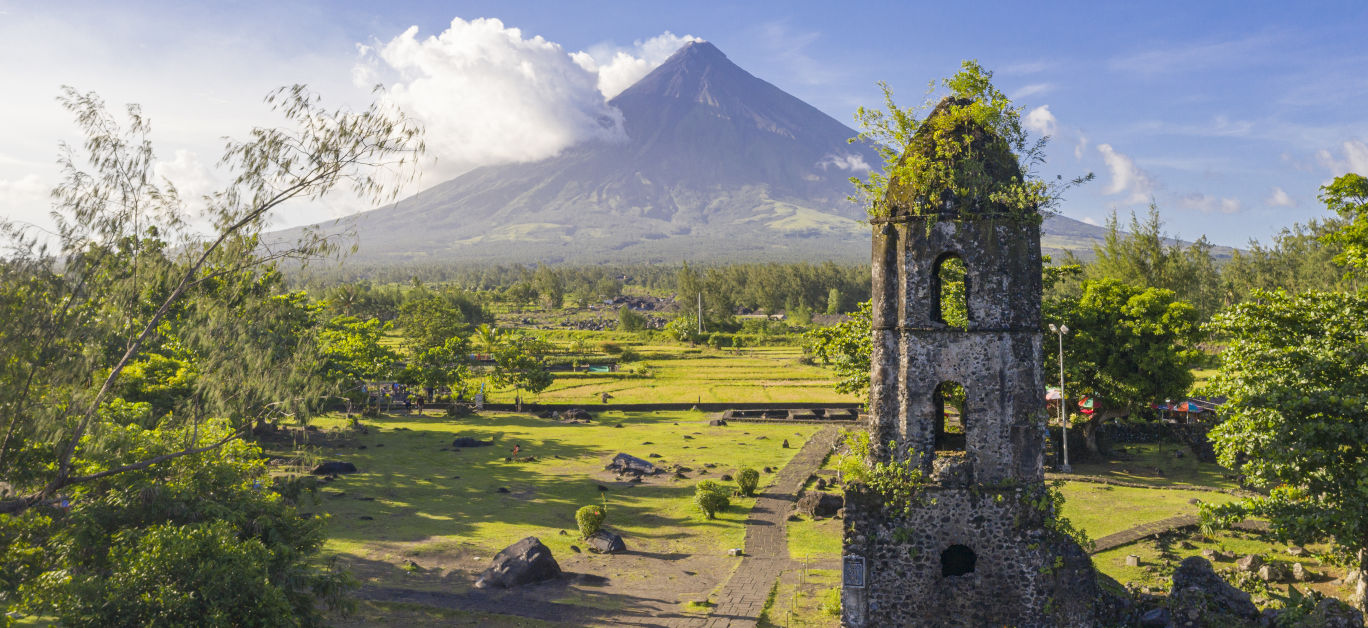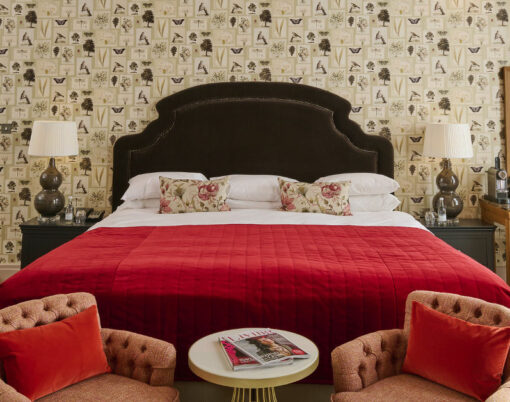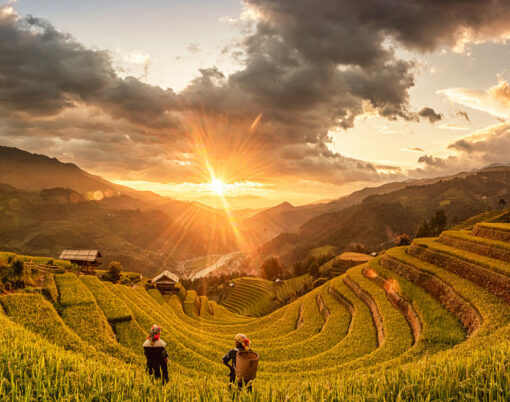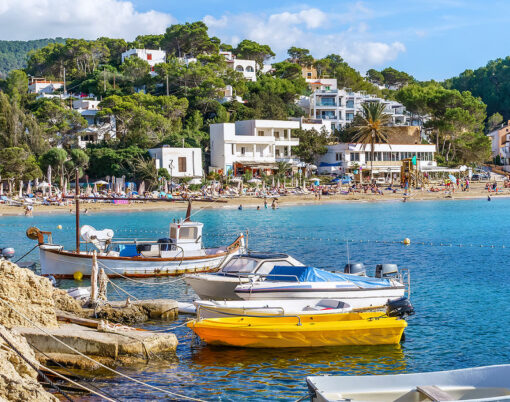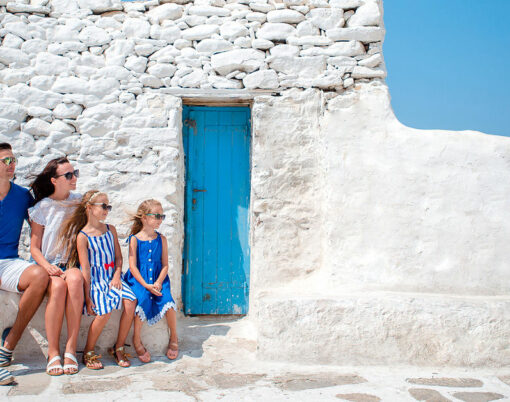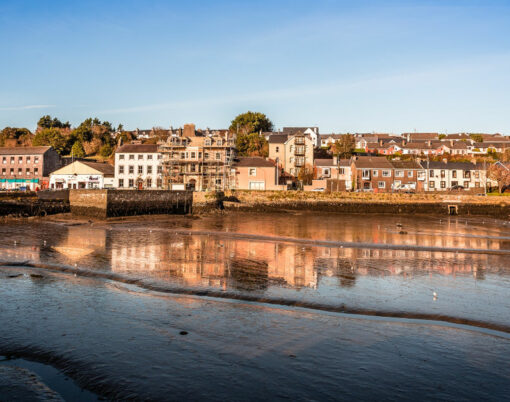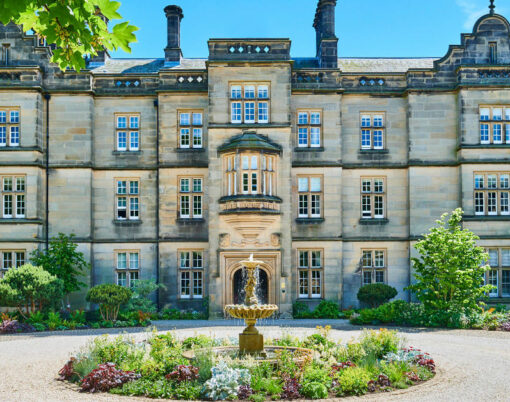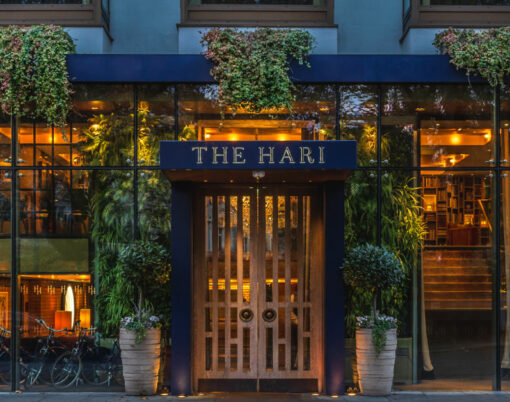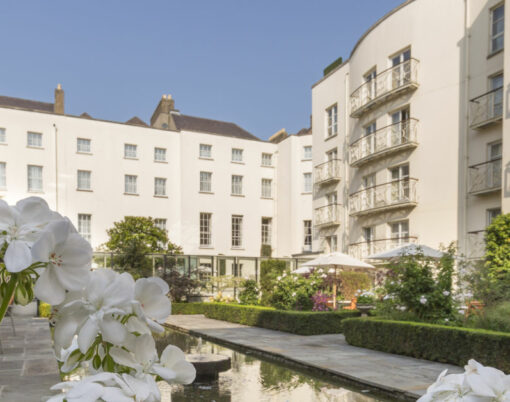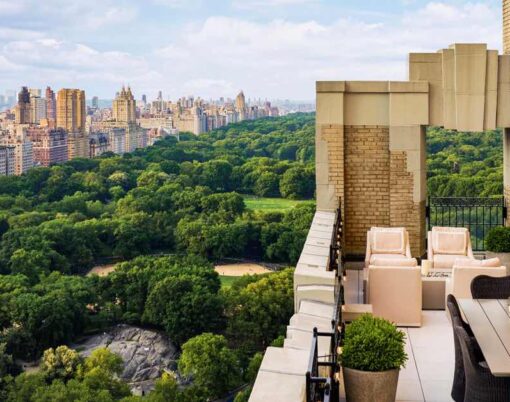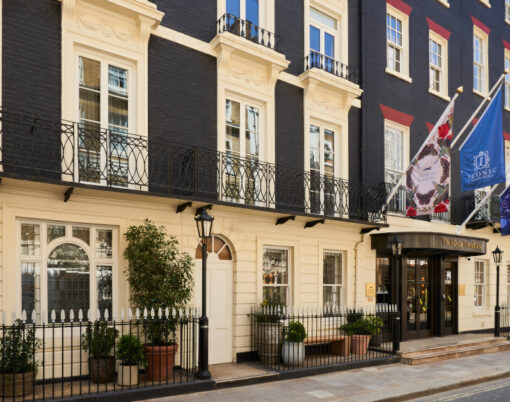Hakuna matata, move aside as, for centuries, ‘bahala na’ has been the prevailing jingle in the Philippines. Meaning ‘come what may,’ the Tagalog phrase is ever-present in the archipelago’s many island resorts, where idle hours are of primary concern and tended to by beachfront bars, infinity pools, and private villas enclosed by bamboo palms, anahaw leaves, and giant taro. It peeks through the grin of a debonair Manila waiter as he nimbly delivers tilmok and crab bound in taro leaves from Bicol, always smiling and attending to any demands that flow.
Nevertheless, the Philippines’ unwavering duty to high-quality hospitality proves that bahala na does have its limits. Traditional hilot massages are delivered with the same intensity of a rice farmer kneading the soil. Spit-roasted pork is roasted with the same precision a Taal embroiderer uses to wield a needle. Good service seems to run bone-deep in the people of the Philippines.
Luzon, the largest island in the Philippines, swells with palm forests, active volcanoes, and tiered rice terraces. The lower regions give way to lagoons, beaches, and sculpted underwater reefs. Perhaps most significantly, the island cradles foggy, fiery Manila, where polished skyscrapers blend into a gridlocked core city.
The island’s luxury landscape is diverse, with private island resorts, hotel skyscrapers, and fine-dining venues emanating outwards from the capital. Just like the remaining 7,106 islands of the Philippines archipelago, Luzon gracefully avoids being boxed into one definition.
Go fine dining in Manila
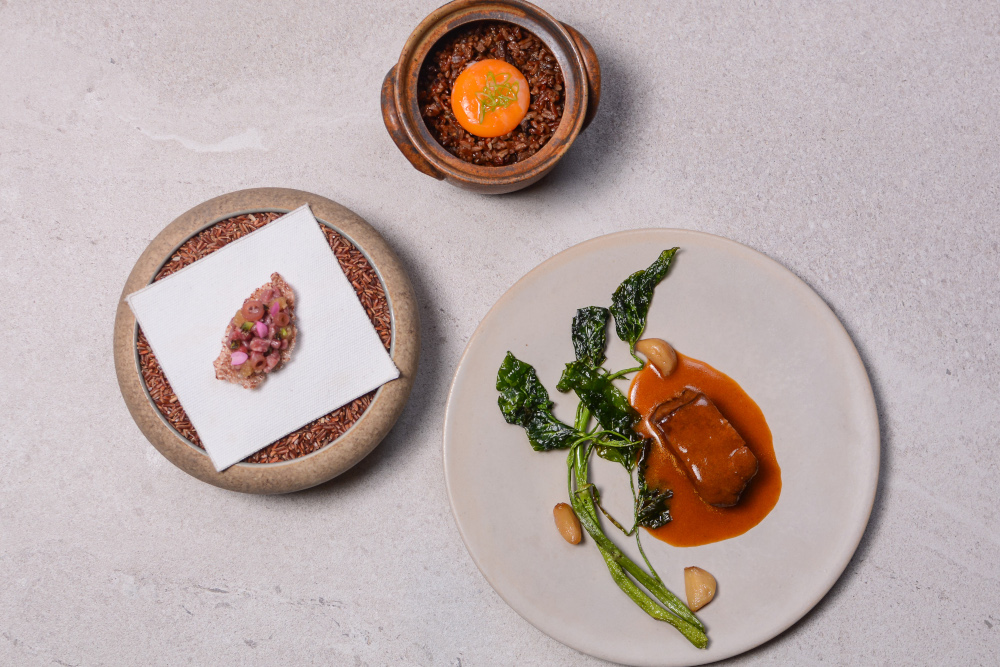
Simmering with a kinetic type of energy, Manila is the main intersection for flights to and from the Philippines’ many islands. Fiery and unflinching by nature, the city never seems to pause for breath and out of that furnace comes a chain of restaurants which apply the heat on many of southeast Asia’s most popular fine-dining venues.
Manila’s restaurants are less single-minded than those of Tokyo, Beijing, or Ho Chi Minh. High numbers of international restaurants echo the diversity of Filipino cuisine, which is an amalgamation of over 100 distinct ethnolinguistic communities. Lab-like in concept, they pair, fuse, and set asunder flavours not just from Bicol, Pampanga, and Luzon, but also from Japan, China, Vietnam, and the West.
Gallery by Chele
Cuisine experimentation is no foreign art to Gallery by Chele in Bonifacio Global City. Local ingredients from Bicol, Binondo, and Pampanga are their bread and butter – or rather, their adobo and rice. However, chefs Chele Gonzalez and Carlos Villaflor’s approach of fusing the methods of foreign recipes with the familiar flavours of Filipino farmers, fishermen, and home cooks have made Gallery by Chele’s dishes a favourite among Filipino high society.
The six- or ten-course set menus and à la carte plates make it evident that both chefs are well-versed and well-travelled in the islands of the Philippines and southeast Asia. Pineapple, calamari, cilantro, and octopus takes inspiration from Mexico and Gonzalez’s burnt cheesecake is inspired by the Basque country in his native Spain. They are just two of the dishes often served under the warm wood interior, inspired by the natural tones of the farm, forest, sand, sea, stone, and oil, and brought to life by partner-owner architect Carlo Calma.
Blackbird at the Nielson Tower
Occupying the site of the Philippines’ first commercial airport, Nielson Tower in the Ayala Triangle, Blackbird at the Nielson Tower isn’t a typical fine-dining experience. Nowadays, the only thing that is elevated are the dishes. A spidery Art Deco spiral staircase ascends from the atrium and into the former control room. The room has been re-worked into a private dining space where diners can privately nibble on international dishes such as blue swimmer crab omelette with lamb rendang, sriracha, and jasmine rice or pepper soft shell crab with nuoc cham.
China Blue
China Blue brings dishes that flush the cheeks to the skyline above Manila Bay. Celebrity chef Jereme Leung, born in Hong Kong, takes the helm of the Conrad Manila restaurant. His reinterpretations of classic Chinese cuisine, combined with the ethereal blue chandelier interior, remain imprinted on the brain long after the last bite. His past endeavours as Chinese executive chef involved building original menus for luxury Asian restaurants, so it’s not surprising that the plates at China Blue have a feeling of class and elevation that’s difficult to find elsewhere.
Go diving in Anilao
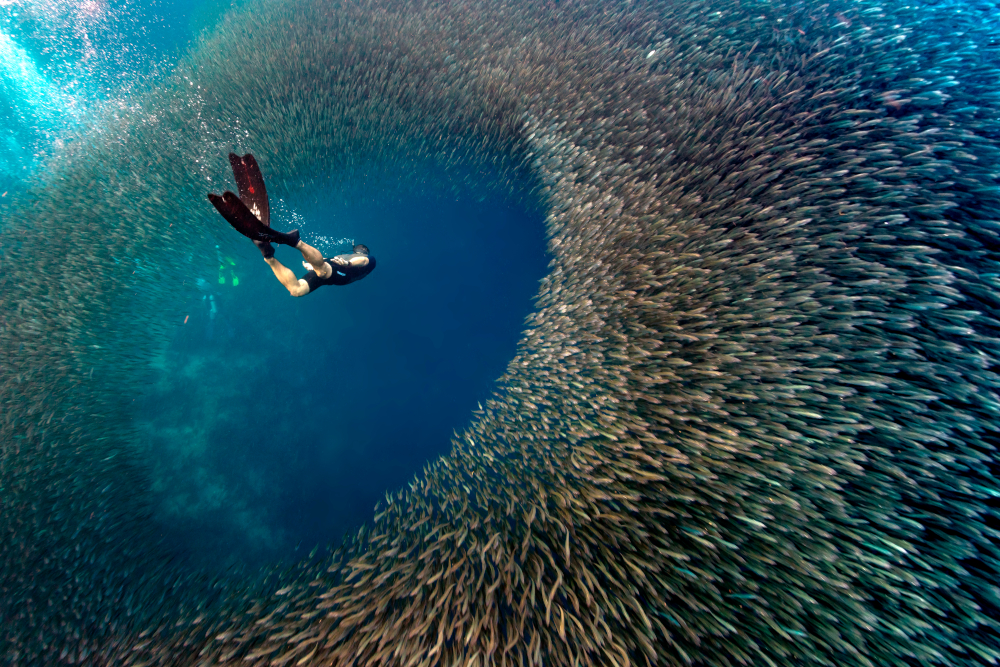
Diving in the Philippines is well-nigh a rite of passage, whether it’s in Palawan, Cebu, Bohol, or Mindoro. Anilao, approximately 90 kilometres south of Manila, was the first frontier for divers in the Philippines. In the 1960s, the first diving operators in the archipelago selected Anilao as their vestibule for the underwater realm.
A generous scattering of luxury four- and five-star resorts have since been erected along the forested coast, where resort-owned bangka boats are poised for departure day and night for muck dives and night dives.
Critters are the kryptonite in the stretch over Balayan Bay, Maricaban Island, and Sombrero Island. Nudibranchs, bobbit worms, fire worms, bumblebee shrimps, and hairy frogfish are some of the motely creatures which populate the hard and soft coral forests of Anilao. With a jet ski, guests might race past scores of juvenile fish or add an element of adrenaline into a private fresh seafood lunch on Sombrero Island.
Visit the heritage town of Taal
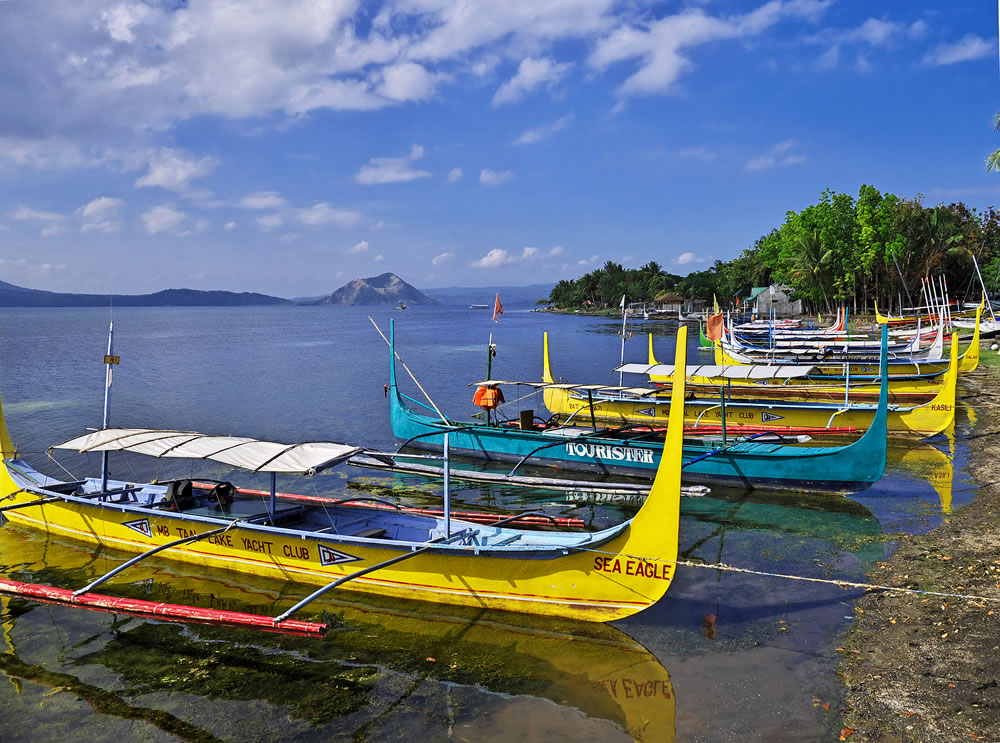
Within driving distance of Anilao and a handful of luxury resorts including The Farm at San Benito, the heritage town of Taal is inhabited by many Manila residents who sought out a sleepier daily regime. On the one hand, the small southern Luzon town’s tightly-spun cobbled streets and Capiz windows imply your arrival at a small Spanish township. On the other hand, smiling embroiderers pouring over Cinderella ball-esque gowns and vendors watching over stalls stacked with fried milkfish, panocha (native jaggery and whole peanuts), and atchara (green papaya pickles) plant the town firmly in the Philippines.
The 19th-century adobe-stone-base houses, which go by the name bahay na batos and combine Filipino and Hispanic influences, flex through earthquakes and the ever-changing urban landscapes of bigger Filipino cities.
The local customs are just as enduring. The unique silver tabernacle façade of the biggest Catholic church in the Far East hosts local weddings and christenings. Residents often stroll through the market wearing the Taal barong, a fabric strung from local abaca, silk, and pineapple fibres.
The people are at the heart of the heritage attractions too. Galleria Taal houses a camera collection belonging to local resident Mr. Manny Barrion, which dates back to the 1800s. Similarly, the Agoncillo-Marino House is a colonial ancestral Spanish era house, a national shrine, and one of the oldest ancestral homes in Taal.
Explore Bacacay by private bangka boat
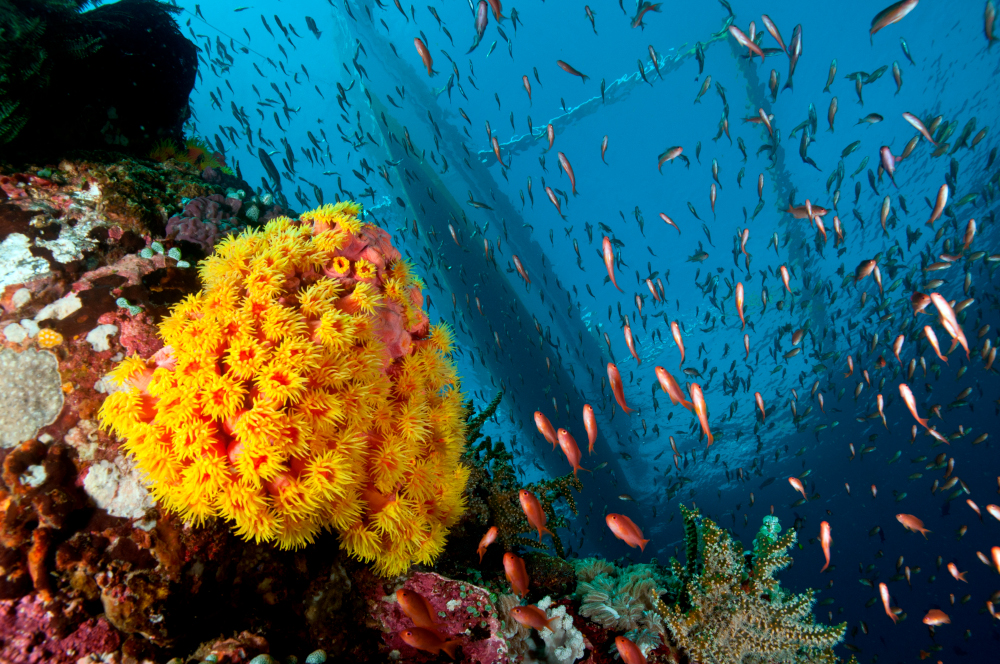
With a wingspan that could compete with the Philippine eagle, traditional bangka boats part the ocean like it’s merely pond water. Hired privately, they make a noble steed for those travelling between the luxury hotels of the Bicol region, which are accessible by a short domestic flight from Manila to Naga Airport.
Travelling between Casa Simeon and Misibis Bay, guests have the power to choose where they want to anchor. At Pototan Cave on Batan Island, a 30-foot entrance gives way to an underground river populated by stalactites and stalagmites. At the private anchorage beside Misibis Bay Resort, the coral reefs are dense with families of swordfish and rainbow fish.
Quad bike or play golf on the Mount Mayon volcano
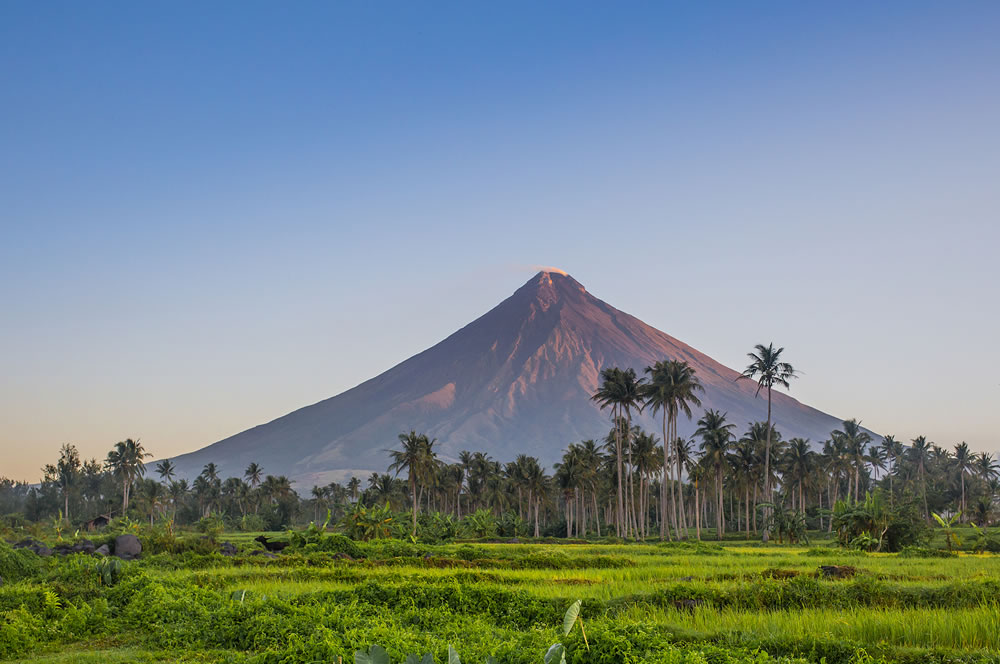
Chaperoned by clouds during the monsoon season, the ever-elusive Mount Mayon chooses to rear her head for only a rare moment. She almost invites the chase. The Mayon SkyDrive All-Terrain Vehicle Adventure provides a unique way to get a close-up view of the grooves of the volcano from the comfort of a 150cc, fully-automatic ATV unit.
The hardy vehicles are poised to traverse routes over former lava fields and lava walls from the 2006 eruption. Other paths pass by the Cagsawa Ruins and Budiao Church Ruins, buried under the lava of the 1814 blast.
The Doña Pepita Golf Course makes for a slower-paced method of witnessing some of Mayon’s personality in action. Located six kilometres from the base of the volcano, the 18-hole golf course was purchased from the Doña Pepita Aquino family by a Korean group in 2016. Since then, it has been transformed from a well-loved local’s haunt to a 75-hectare playground for golfers from around the globe.
Visit BidiBidi Cafe and Workshop
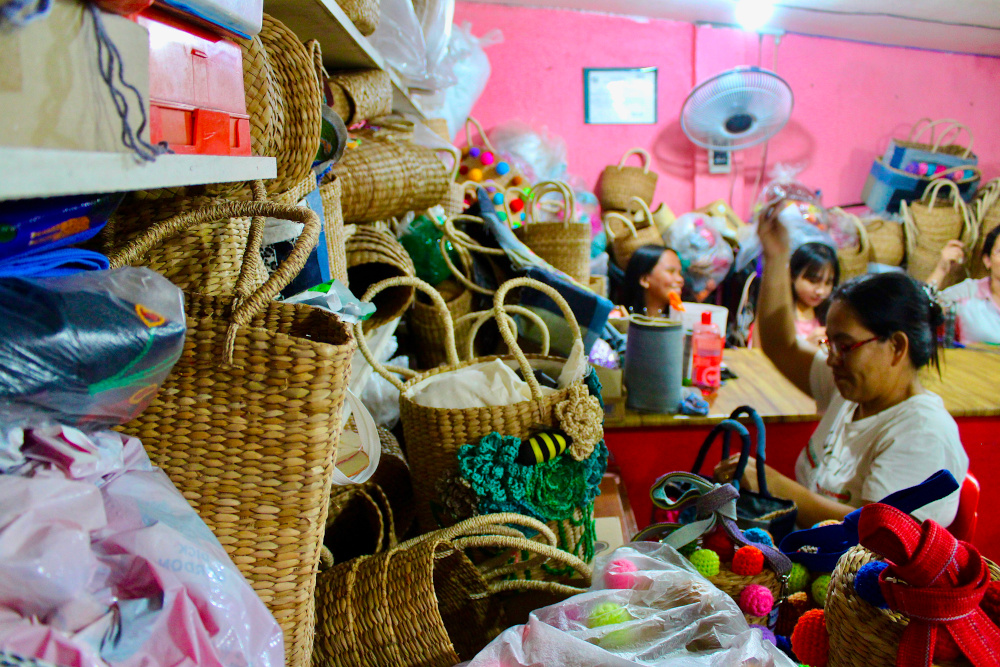
Owned by the larger-than-life Bernadette De Los Santos, the BidiBidi Cafe is just one screw in a machine that supports sustainability in Camarines Sur. Speak to a Camarines Sur local and it won’t be long until someone recognises the cafe’s signature banana blossom burger, puso ng saging, which is a patty fashioned from the fleshy banana plant flower. By appointment via the Facebook page, visitors can arrange to watch the locally-employed female weavers in action in the workshop.
Where to stay in Luzon
Hotel Okura Manila
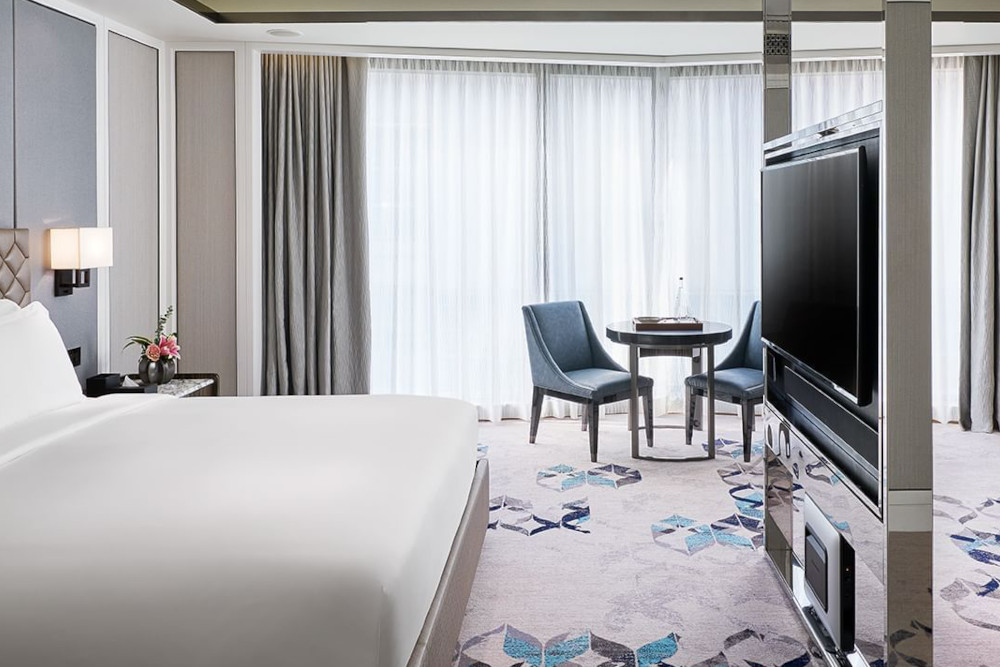
Whether you’re quickly grazing through Manila on the way to Bicol and Tagaytay or taking a longer reprieve to investigate the capital’s finer cavities, Hotel Okura Manila brings omotenashi – Japanese hospitality – to the city. Newly opened in 2021, the Pasay City high rise is conveniently connected to the international airport by a footbridge.
However, its Japanese-inspired rooms are the dominant solicitation. Rooms may feature Japanese yukata lounging sets, Japanese bidets, tsubo-niwa pocket gardens, or hanoki tubs fashioned from cypress. Many of the features have been copied, pasted, and tweaked, from the first Hotel Okura in Tokyo, which was established in 1962.
The hotel’s signature fine-dining restaurant, Yamazato, is no exception. The addition of seasonal Filipino ingredients makes it stand out from its Shanghai, Macau, Bangkok, Taipei and Amsterdam counterparts. Appetisers might be composed of deep-fried crab with vinegared ginger or fluffy nishiki tamago with simmered arrowhead, chestnuts, and potato deep-fried with ginkgo and momiji leaf motif. For Shokuji, small tendons are paired with seafood tempura, Japanese pickles, and miso soup.
Admiral Hotel Manila
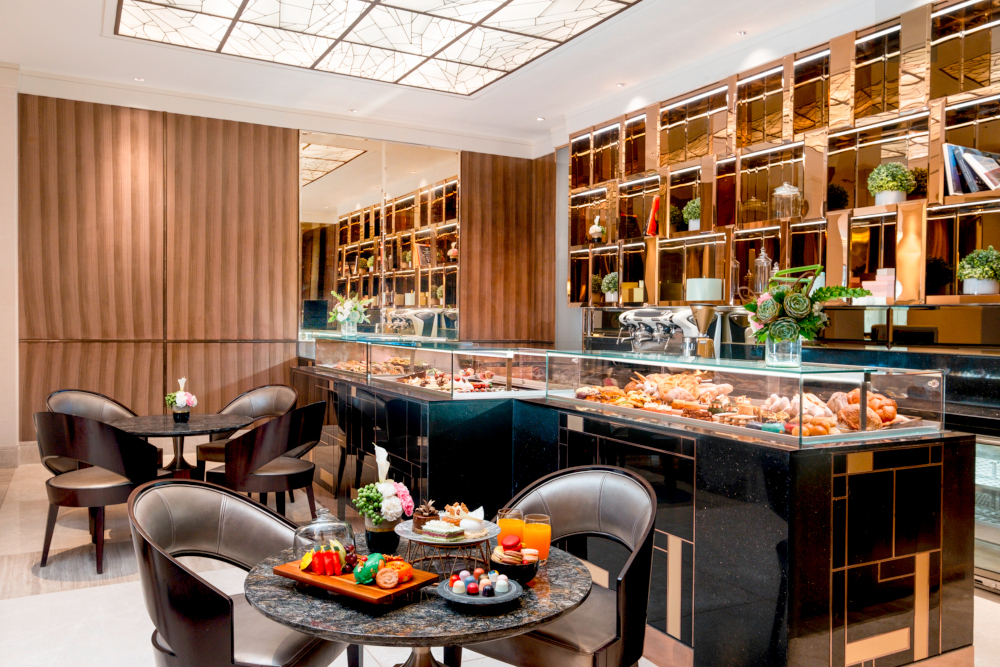
Admiral Hotel Manila is a montage of Manila’s Golden Age glamour. It takes up residence on the city’s Roxas Boulevard, the vanguard of Manila Bay, and with an Art Deco architectural style and Spanish features such as machuca floor tiles and barandilla balconies, the hotel acts as a time capsule back to the early 1940s.
The El Atrio’s central art installation is the first thing to demand hotel guests’ attention. Draped from the ceiling, a flock of sculptured open books are an ode to the intricate stories of Manila through the ages.
The full storyline plays out further as you rise from floor-to-floor, where native art pieces and displays depicting folk dances, heroes, and festivals pay tribute to the local culture. On the rooftop, Coconut Grove is the venue’s fruity alfresco cocktail bar, and in the atrium, Kevin Ong, the hotel’s celebrity pastry chef, crafts macarons and other sweet pastries.
The Farm at San Benito
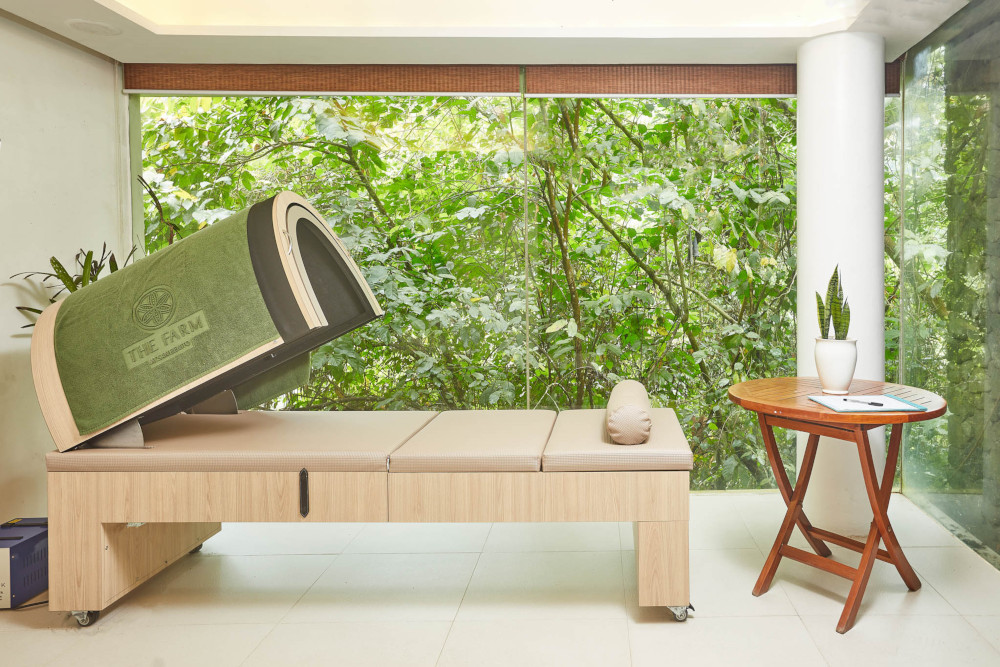
One of the first of its kind in the Philippines, The Farm at San Benito merges holistic health programmes with the charisma of a luxury jungle resort. Slotted into a 48-hectare plot in the Lipa frontier, the resort has a 15,000-square-metre organic farm with 3,000 coconut trees, a farm-to-skin spa, an aqua hydrotherapy facility, and a medical centre.
Three farm-to-table restaurants, which are vegan, vegetarian, and pescetarian, devise health-conscious blue zone diet plates such as flax and coconut crackers with pineapple salsa, rich in fibre, and ginger and clam soup to aid efficient digestion.
At the beginning of the retreat, the doctor devises a tailored and targeted holistic health plan following a full health assessment. It may include a raw food diet, exercises such as yoga, or more intense treatments such as immune-boosting intra-venous vitamin infusions or colon hydrotherapy.
Casa Simeon
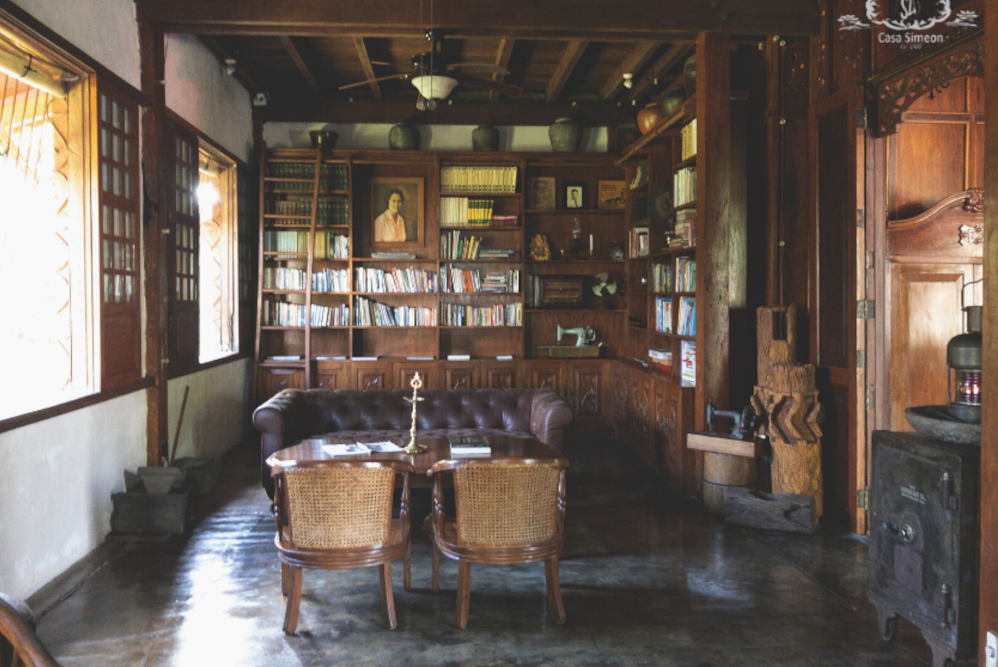
A 1927 family home built by Don Simeon Alparce, Casa Simeon is a luxury boutique hotel with a long heritage. Restored and repurposed by the family’s grandson, Enrico Alparce Calleja, barayong wood once used to craft Spanish galleons lines the exterior.
Guests at the residence can dine with the same Filipino cheer the family once used to, surrounded by iron-grill glass windows, a Spanish-American architectural fusion, sharing staples of Bicolano cooking infused with coconut milk and chilies.
This may feature Bicol Express, also known as pasta Bicolandia, which consists of pork and chilies cooked in coconut milk and parmesan cheese combined with pasta rather than rice. A Casa Simeon family heirloom recipe is an essential too, such as their reinterpretation of banana fritters, which are paired with cheese and homemade tableya, a dark chocolate drink.
Misibis Bay Resort
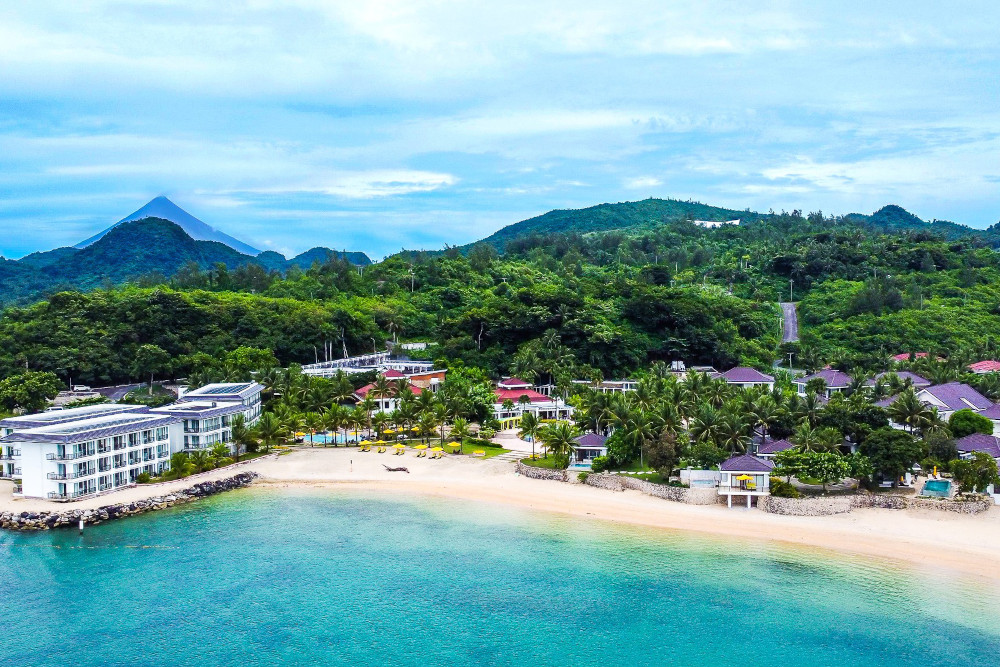
With a private port for bangka boat arrivals and a lagoon-style beachfront with a beach club, Misibis Bay Resort regularly hosts celebrity guests. Slotted into a corner of the island accessible only by steep, winding roads bordered by palm tree forests, the atmosphere is confidential. The five hectares play host to the Sula sunset bar, where guests can employ a personal bartender to hand out canapes, cocktails, and cheese platters.
Hobie cat sailing and watersports like wakeboarding, windsurfing, kayaking and jet skiing take place on the private saltwater lagoon. Then, there’s the restaurant, which sprouts with Asian dishes infused with native spices from Bicol.
In a nutshell
Variety is the spice for a luxury getaway on Luzon in the Philippines. At one moment, you might be swept away from a private island lunch in a traditional bangka boat, belly swollen with fresh shrimp and squid cooked in coconut milk and sauteed garlic, onion, and ginger. Next, you might be soaking in a hinoki tub in a Manila high-rise or 20 metres deep in Balayan Bay witnessing barracudas on the prowl.
No matter how cheerfully convoluted your itinerary is, one thing is for certain. Filipino hospitality has a distinctly human touch: an extra smile and ‘mamsir’ or complimentary pili nuts and a fresh mango blend as you arrive onto a private beach or island.












